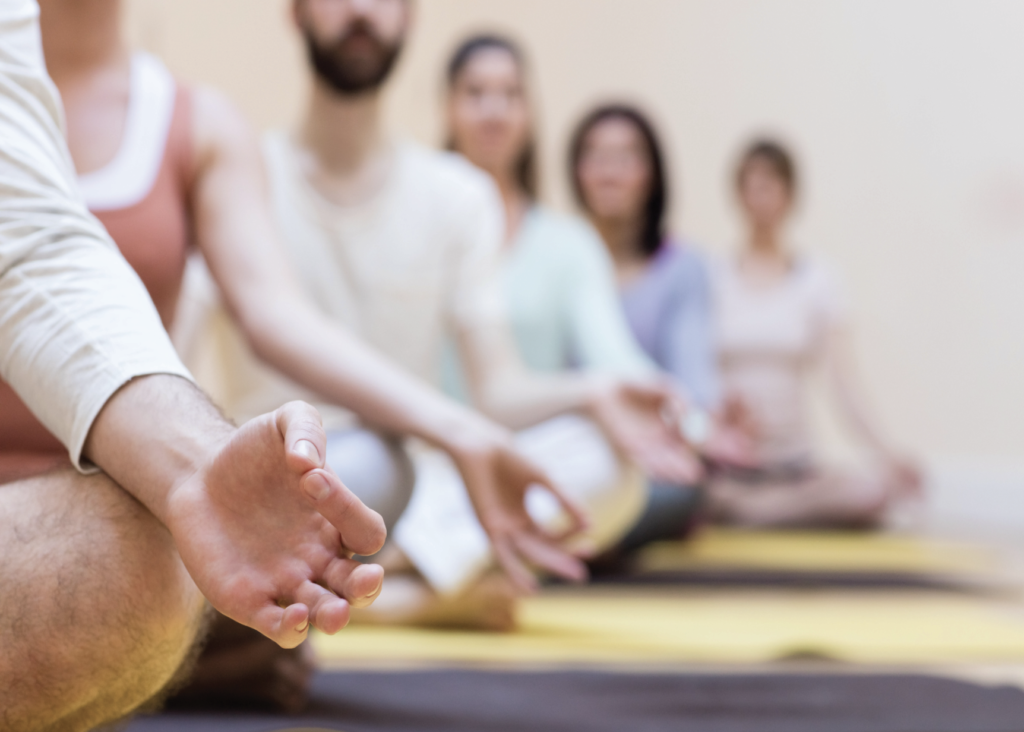A certain amount of stress is part of our condition. It is a contributory factor in several disorders — and, a direct cause of illness. Stress also, likewise, motivates us to reach our goals faster. Stress is related to changes that occur in the body when the mind sees a threat, or challenge. The threat can be real, or imaginary.
The changes that occur in the body, due to stress, are caused by the release of chemical messengers, into the blood stream, and by nerve impulses. This is famously called as the “fight-or-flight” response — a survival mechanism.
You’d divide the stress response into three components.
Preparation: The hazard, or danger, is distinguished and assessed in the brain. This is involuntary; almost instantaneous. It does not require conscious control.
Resolution: As the subconscious brain prepares the body for “action”, a specialised part of the nervous system — the parasympathetic — stirs the body with impulses. In the process, the body produces catecholamines to be carried in the bloodstream to receptors located in various glands.
Explosion. In this state, the brain is fully alert. As the muscles get charged with energy, they push the body to take crucial “action” — with full adeptness.
You sure know the term that best describes stress — “fight-or-flight” response. The idea has served us well for thousands of years, although the form of stress we encounter today is starkly different from what our ancestors faced. In earlier times, if one faced a deadly animal, they would be ready to fight, or flee, in a flash. Once the threat was over, one would return to one’s normal state — a state of balance.
In today’s world, the types of stress we face are not direct, or physical. Contemporary stress is more often related to, or caused by, emotional and psychological factors. So, you may well guess that the “fight-or-flight” response of yore is not appropriate to our times. You cannot, for instance, “blast” your manager if you do not agree with their line of thought on a given project, right?
What’s more, the stresses we encounter today are continual. They are also cumulative. However, our body is intended to function and react adequately to stress. Naturally. At the same time, it is not uncommon for most of us to stay in a continual state of “stressful” readiness. Reason: we are not always fully relaxed, or physiologically active, to liberate our stress levels. This is unlike what happened to our ancestors who would release their physical reactions for a definitive outcome — end of the battle, or escape from a perilous beast. On the contrary, the stresses that we face today may over time, or cumulatively, trigger hypertension (high blood pressure), diabetes, digestive disorders, such as irritable bowel syndrome (IBS) muscular tension, emotional or psychological problems and immune dysfunction.
Why relaxation
Relaxation is the bright as also the other side of the spectrum. It reflects the “normal state” to which our ancestors would return soon after overcoming a known threat, or danger. They would also achieve such a relaxed state of mind because the stress of their fight, or flight, response with danger was constructively offset by physical action.
The situation is different today. Yet, there are ways to dealing with stress just as effectively. Physical activity, or exercise, in any form, for example, can help scatter your stress hormones. This can help your body to relax and ease your stressful distress.
You may feel a wee bit stiff following a work-out though, all right, but the overall effect is relieving. Any activity — a game of tennis, running, or brisk walk — can reduce your stress levels. It is a different thing that most people find it difficult to get the time, or interest, for regular exercise. In such a case, or otherwise, it is important for you to use relaxation techniques, such as meditation and yoga — they help you dissipate your stress levels. This will help you, in turn, to maintain good health and energy. As the adage goes, you can do your best only when you are relaxed. Not when you are tense.
What is relaxation?
Relaxation is a state of the mind. It is also a state of the body. When the mind is tranquil, the body is calm, and vice versa. A tense mind activates a tense body and vice versa. When the mind and body are relaxed, the body is able to maintain good and/or optimal health and well-being. This, in turn, powers the immune system and helps repair tissue damage, which takes place in the body in the wake of stress.
Relaxation is a “must-do” to dealing with psychological stress as much as physical stresses of everyday life. When the mind is relaxed, the heart and respiratory rates slow down; they are steady too. Our blood pressure is healthily fine. The muscles are relaxed. The internal organs have adequate supply of nutrients and also blood. Our feel-good chemicals, or endorphins, are also in adequate supply when we are relaxed. Endorphins affect our moods. They also give us a feeling of well-being, besides donning the role of natural pain-killers.
Exercise helps to release endorphins. This is reason enough why exercise, or a good bout of laughter, is suggested to be one of nature’s most celebrated stress-busters.
The technique
You may call the quintessential practical “how-to”, or keynote, of this article, as mindful or focused progressive muscular relaxation. It is easy to learn and practice at home. It entails the contraction and relaxation of the large muscle groups in the body, one after the other. Start at your feet and end up with your face, till each part is free of tension. It is not simple for some people to “unchain,” or learn the art of muscular easing swiftly. With persistence, this can be learned and with good effect.
The basics
All you need to first do is look deeply within — into yourself. Not your surroundings. Make sure you are not disturbed by your kids, spouse, telephone, or noise, when you practice the technique. Use comfortable clothes. Also, make sure the room is softly lit. Comfortably cool in the tropics; warm in cold climes. Lie down on your back on a firm bed, or cozy mat.
You may place a thin, soft pillow under your head. Or, below your knees. Place your arms by your side. Alternately, you can put them across your stomach. Either way, try to remain comfortable. Find out what suits your comfort level best.
But, remember — you need time to master the technique. Have patience. When you have mastered the technique, you will be amazed to “let go” at will — anywhere. You will delight in the fact that you are able to stay calm and relaxed even in the face of stressful situations. Over time, you will also know how you can stay in tune with your body and also locate where you “accumulate” stress, especially when you begin to get tense.
Making relaxation work for you
Close your eyes. Let your mind go “blank.” Take a few deep breaths. Exhale s-l-o-w-l-y. Relax completely.
Start with your right foot. Twist your toes tight. Crunch your foot. Count up to 10. Let go. Relax. Now, shift your focus to your left foot. Repeat until your foot feels warm and droopy.
Tense the calf muscles of your right leg. Hold for a count of 10. Let go. Relax. Focus on the calf muscle of your left leg. Count up to 10, and relax.
In like manner, move up to your right thigh. Count up to 10. It will take time for you to feel relaxed at this stage. Not to worry. Repeat the step with your left thigh. Let go. Relax. Repeat the process until you feel your legs are heavy and immobile.
Now, clench your buttock (muscles) as tightly as you can. Hold for a count of 10. Let go. Repeat the process with your stomach muscles. You should now feel as if you are sinking into your bed, or mat.
As you move up to your chest, take three deep breaths. This will help you work on the muscles around your chest. It increases the level of oxygen in your blood. Exhale s-l-o-w-l-y and visualise your mental tensions being dispersed away.
Move to your right arm. Make a fist and “grip” it tightly. Hold for a count of 10. Let go. Repeat until your arm is warm and immovable. Repeat with your left arm. You may also tense your arms together, if you can. Now, “work up” your forearm, on either side, like you did with your thigh.
You now reach the most important part of the exercise — your shoulders and neck. Since most of the tension in the body is housed in the shoulders and neck muscles, it may take a little time for you to relax them fully. So, calm down — if you can’t get it right the first time.
Now — hunch your shoulders as far as possible. Hold tight and let them drop back to bed, or mat. You can even push your shoulders hard up to your ears, if possible. Hold. Let go. Repeat the sequence 8-10 times, or as many times as possible.
Once you have finished with your shoulders, rock your head from side-to-side. S-l-o-w-l-y. This will help loosen your neck muscles.
Focus on your face. You may smile, grimace, sulk, or bare your teeth, and so on. Hold for a few seconds. Let go.
Try to take a few more deep, even breaths. Imagine your tensions ebbing away into the distance. Recite a mantra: “I feel more relaxed; and, I’m calm.” Now, imagine your body sinking deep into your bed, or mat.
You may sure feel sleepy at this point in time. Don’t go to sleep. Rest and unwind — for about ten minutes.
Come back into your own, s-l-o-w-l-y, or “shake” yourself before you get up and start your work, or chore, or anything else you were doing, or wish to do.
You are transformed and liberated — you will feel fresh, de-stressed and relaxed too.


 [/column]
[/column]